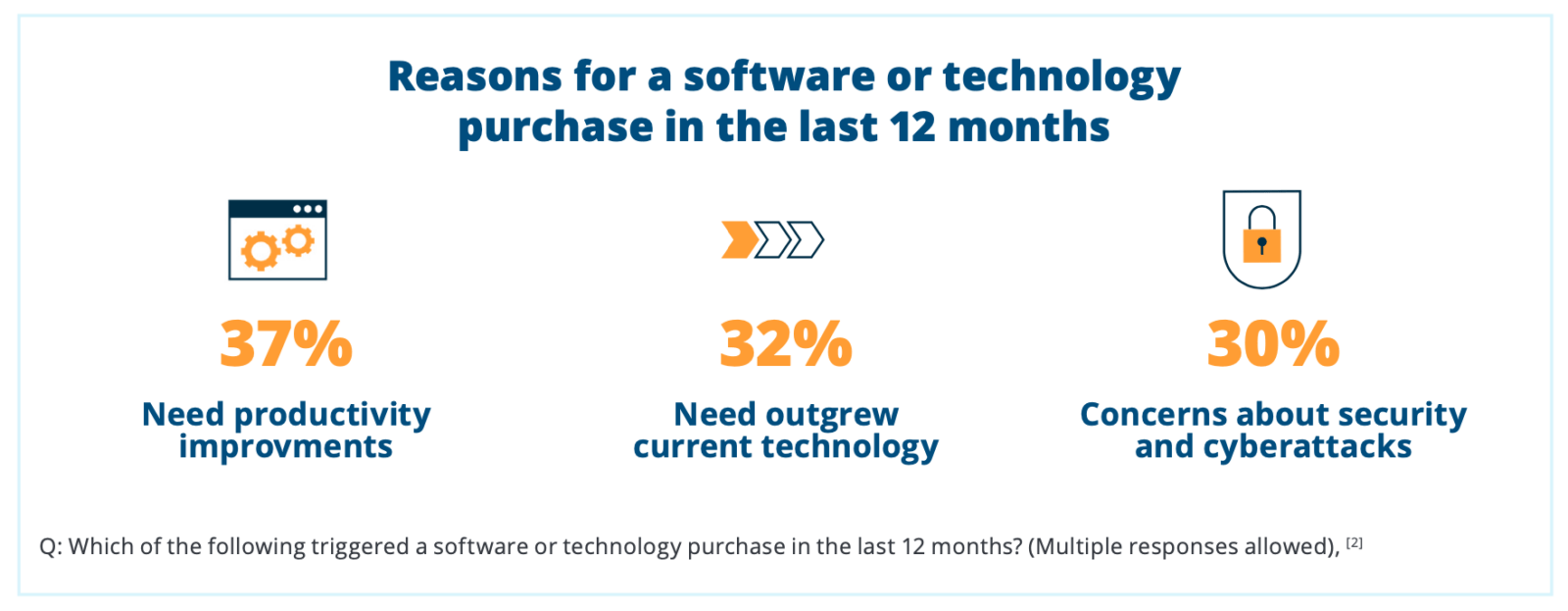As the supply chain becomes increasingly complex, companies rely heavily on software to manage inventory and procurement processes. However, choosing the wrong logistics software can cause numerous problems that negatively impact business operations.
In this article, we’ll explore the importance of selecting reliable software for supply chain management, the consequences of poor software quality, and how to measure the quality of the software and avoid mistakes with the choice of the service provider.
20% Delivery Delay and $500K Loss: The Impact of Poor Software Implementation
Jenny is a supply chain manager at a large manufacturing company producing consumer electronics. Recently, the company implemented a new software system to manage its inventory and procurement processes. However, since the implementation, the software has been causing various issues affecting the company’s operations.
The consequences of the inaccurate demand forecasts generated by the software were severe. Overstocking of certain products and understocking of others led to a significant loss of revenue for the company, estimated at $500,000. This loss not only affected the company’s financial performance but also affected the company’s reputation among customers. Moreover, the software was slow and unresponsive, causing delays in procurement processes and making it difficult for Jenny and her team to track orders and shipments. This led to a 20% increase in delivery times and customer dissatisfaction. In the long run, this could lead to customers switching to competitors, resulting in market share and revenue loss.
“The failures occur not only for the reason of poor software or platform quality, – says Ihor Prudyvus, Engineering Director at Artelogic. – One of the biggest challenges businesses face is selecting and implementing the right software. While they may opt for the best-in-class solution, it’s not uncommon for them to end up paying for needless functionalities. An ill-suited logistics software implementation or an inappropriate choice could result in erroneous data, missed deadlines, and reduced revenue. Choosing software that caters to your specific needs and offers dependable assistance is crucial to prevent expensive blunders and disruptions in your supply chain operations.”
The consequences of the software issues were not limited to financial losses alone. It also caused stress and frustration among the supply chain team, as they struggled to work with a system that was not functioning correctly.
Four Ways to Avoid the Costly Consequences of Poor Software Quality
According to Capterra’s 2023 SMB Tech Trends Survey, supply chain management software is among the top five most commonly purchased software types by small and medium-sized businesses. However, struggling with software that fails to meet expectations is one of the top reasons businesses experience buyer’s remorse, with 33% of software buyers citing this as a concern. Here are five ways businesses can ensure software quality to avoid these costly consequences.
- Prioritizing Software Quality Over Cost Savings
Businesses must prioritize software quality over cost savings when selecting software vendors. Poor software quality can lead to lost revenue, missed sales opportunities, and damage to a business’s reputation.
For example, British Airways has been issued a £20m ($26m) penalty by the Information Commissioner’s Office (ICO) following an investigation into their data breach that impacted over 400,000 customers. The airline was deemed to have utilized inadequate software security, exposing them to cyberattacks.
- Preventing Costly Consequences with Proper Software Testing
“Quality assurance and software testing are essential investments for any successful software development project. Regularly investing in these processes helps businesses effectively identify potential risks, minimize security breaches, protect confidential data, and avoid costly errors or defects that can arise later in the development process” – Yaroslav Havryliv, Senior Engineering Manager at Artelogic.
- Choosing Software that Integrates Well
Businesses should prioritize software that meets their needs and integrates well with existing systems. Incompatibility issues can cause delays and inefficiencies, resulting in lost productivity and revenue. For example, the US Navy’s aircraft carrier USS Gerald R. Ford was delayed by over a year due to software integration issues that amounted to a $13 billion price tag.
Businesses should regularly evaluate and update their software to ensure it remains secure and up-to-date. Outdated software can be vulnerable to cyberattacks and malware, resulting in data breaches and costly downtime.
- Keeping Your Software Up-to-Date
Businesses should regularly evaluate and update their software to ensure it remains secure and up-to-date. Outdated software can be vulnerable to cyberattacks and malware, resulting in data breaches and costly downtime.
Measuring the effectiveness of your logistics software implementation
When evaluating the success of a software investment, it can be difficult to measure. But several factors should indicate if you’ve made a favorable decision – from staff engagement and customer satisfaction to workflow optimization and cost savings. By considering these markers, businesses may determine whether their implementation was worth every penny!
The first step in conducting a software for logistics management ROI assessment is identifying the goals you hoped to achieve by implementing the software. This could include streamlining processes, reducing costs, or increasing productivity.

Once you have identified your goals, you can use specific metrics to measure your progress toward achieving them. For example, if your goal was to reduce costs, you could track expenses before and after the software adoption.
To ensure the successful adoption of new software, defining the metrics it should impact and project future growth is crucial. This accountability provides a roadmap to measure progress and refine strategies for optimal outcomes. For instance, the project manager can gauge the time it takes for team members to complete specific tasks, identify areas for improvement, and anticipate potential reductions in time with the right tools or platforms in place.
Regarding supply chain and logistics software, businesses can apply industrial benchmarking or regulation requirements.
“To get the most accurate results, ensure the most exact results from your assessment by utilizing someone with a deep understanding of how the software has been integrated into company operations. As an added benefit, ensuring that staff is familiarized with its usage for at least six months will ensure accurate insights can be gleaned.” – said Ihor Prudyvus, Engineering Director at Artelogic.
There are several vital points in measuring the success of your software adoption.
- Investing in the right tools pays off.
Your people are invaluable resources – their time is worth its weight in gold, and investing with software that saves both money and time is like a double bonus! Let’s look at how this new technology has shifted our employees’ roles: they have more capacity to do meaningful work now because tedious tasks no longer weigh them down.
- You don’t always see direct profits.
Investing in the right software for logistics management can have significant hidden benefits. Maybe security measures protect your business from fines and audits; perhaps compliance regulations require specific programs to be up-to-date—whatever it is, these investments are essential for long-term success!
- Investing in software can be like planting the seeds for future growth.
After a period of cultivation and tender care, investment returns blossom with time. Measuring ROI is an ongoing journey – have projects been running more efficiently since implementation? Has employee productivity increased due to automation freeing up their time from mundane tasks? By regularly assessing what advantages are being gleaned from this technology, its boundless potential starts unlocking at lightning speed! So why wait any longer—look back now and discover how much faster that flower has grown until now!
It’s also important to take into account the total cost of ownership (TCO) of the software, which includes not just the initial cost but also ongoing maintenance and support. By factoring in the TCO, you can get a more accurate picture of the financial impact of the software adoption.
To sum up, it’s important to pick reliable logistics software to avoid any issues that could harm business operations. If you end up with crappy software, it could cause many problems, like lost revenue, missed sales, and a damaged rep. So, it’s crucial to prioritize quality over saving money when picking software vendors, get the software tested and QA’d properly, choose software that works well with your current setup, keep it updated, and track progress by setting goals and using metrics. Investing in the right software tools will save time and money and free up your employees to do more meaningful work.

New Trends in Energy Trading and Risk Management Software












